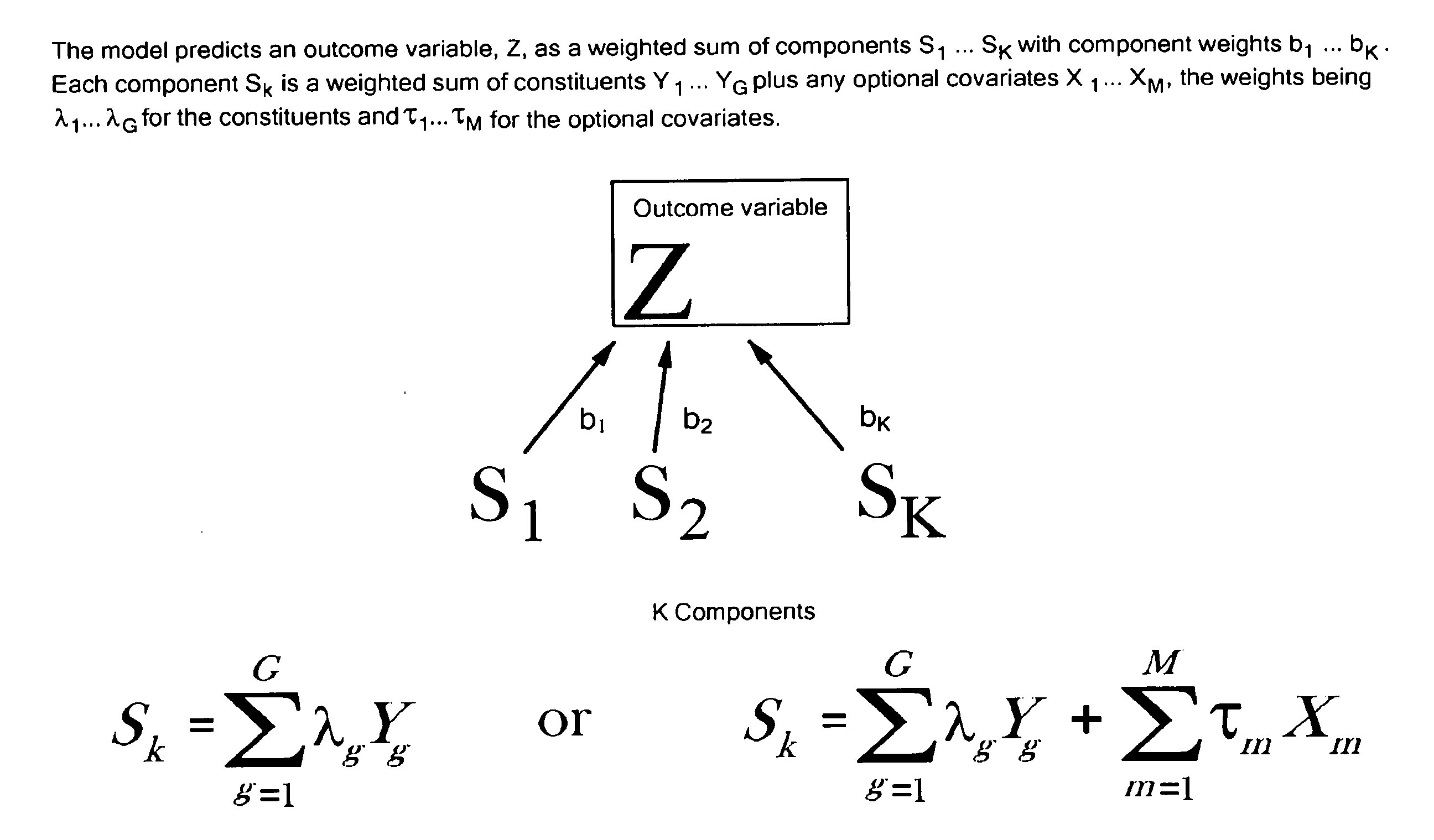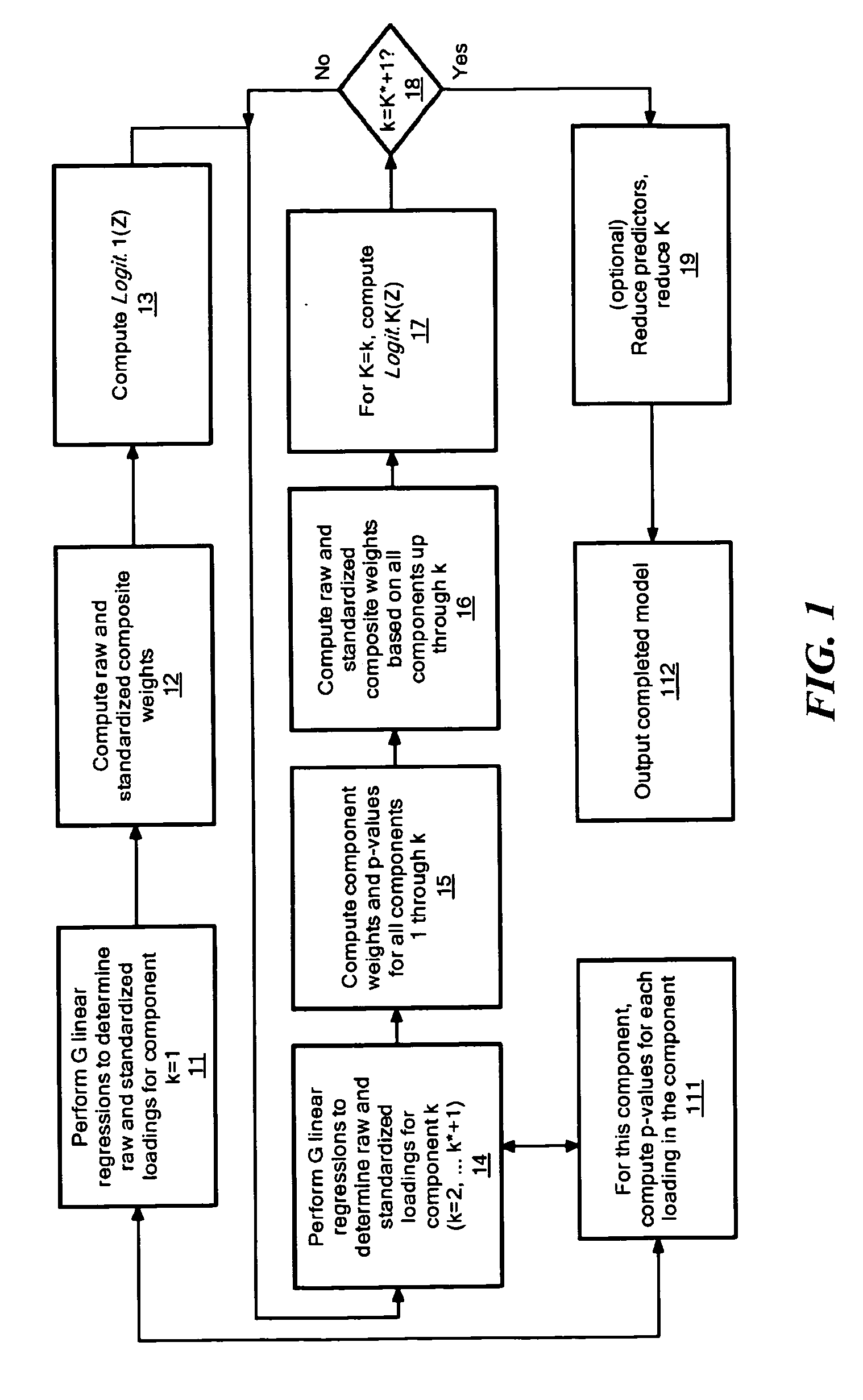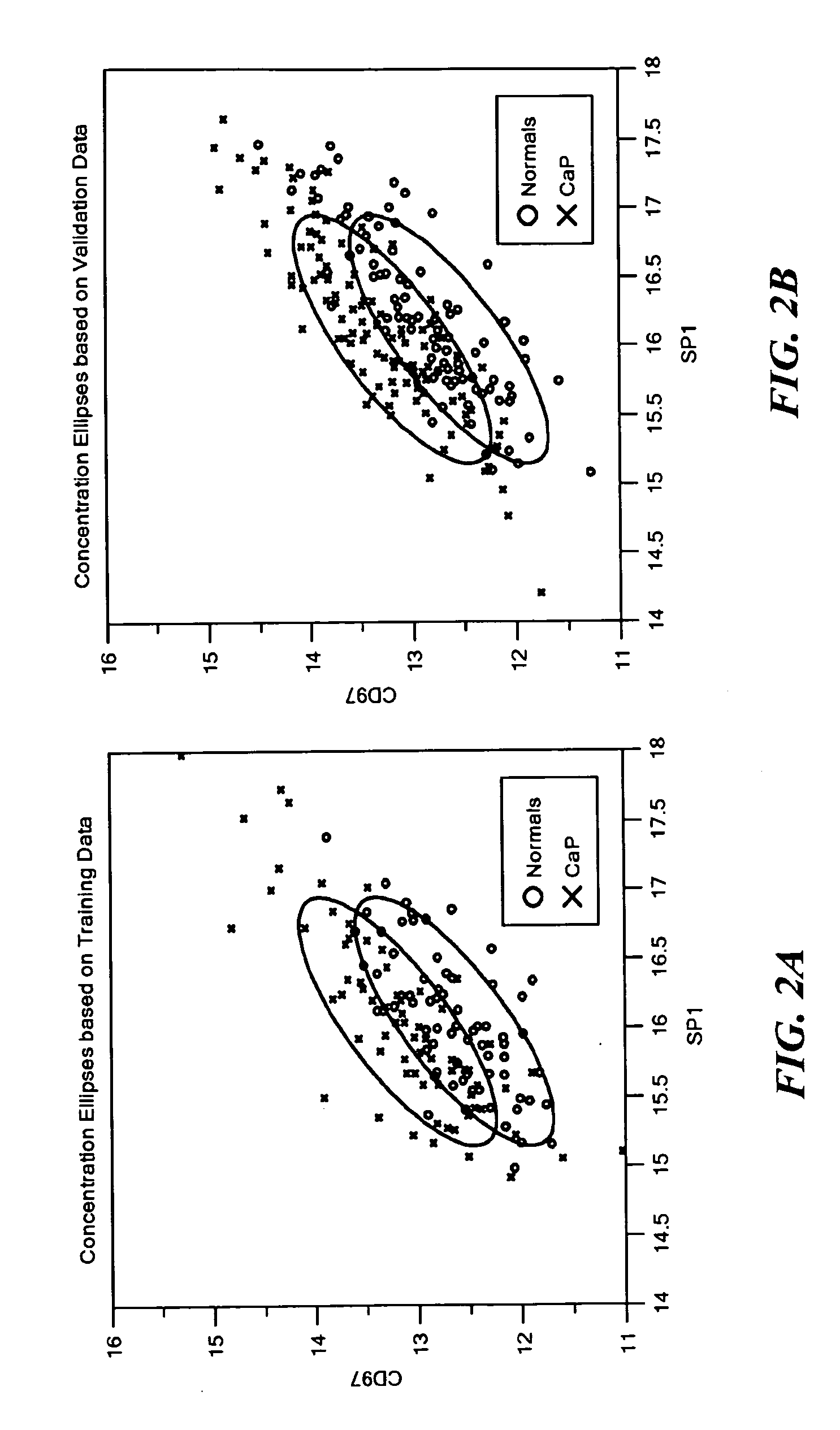Computer-Implemented Models Predicting Outcome Variables and Characterizing More Fundamental Underlying Conditions
a computer-implemented model and outcome variable technology, applied in the direction of computation using non-denominational number representation, instruments, material analysis, etc., can solve the problems of weakness and limitations of both prediction and variable reduction methodologies
- Summary
- Abstract
- Description
- Claims
- Application Information
AI Technical Summary
Benefits of technology
Problems solved by technology
Method used
Image
Examples
example 1
[0156]Consider prostate cancer data where Z=1 corresponds to cancer (N1=76) and Z=0 to normals (N2=76). The results from extracting the first component obtained from 8 predictors is:
TABLE 2Unstandardized loadings and associated p-valuesfor the first component in the 8-gene modelComponent #1gGene (Yg)loadingp-value1CD970.533.1E−072CDK20.601.7E−063GSK3B0.190.084IQGAP10.190.045MAPK1−0.040.736PTPRC−0.140.267RP51077B9.41.061.4E−088SP10.040.73
[0157]We provide methods for assessing the importance (measured by a standardized composite weight) of each predictor in a model to predict a given outcome variable, and related methods for assessing each predictor's contribution (measured by a loading) within each component of a K-component model. —We also introduce (a) p-values, which test whether a given loading or component weight (these are different concepts as defined above) is significantly different from 0, and (b) importance measures. Subtract the mean score S1.0 for a reference group (say ...
PUM
 Login to View More
Login to View More Abstract
Description
Claims
Application Information
 Login to View More
Login to View More - R&D
- Intellectual Property
- Life Sciences
- Materials
- Tech Scout
- Unparalleled Data Quality
- Higher Quality Content
- 60% Fewer Hallucinations
Browse by: Latest US Patents, China's latest patents, Technical Efficacy Thesaurus, Application Domain, Technology Topic, Popular Technical Reports.
© 2025 PatSnap. All rights reserved.Legal|Privacy policy|Modern Slavery Act Transparency Statement|Sitemap|About US| Contact US: help@patsnap.com



